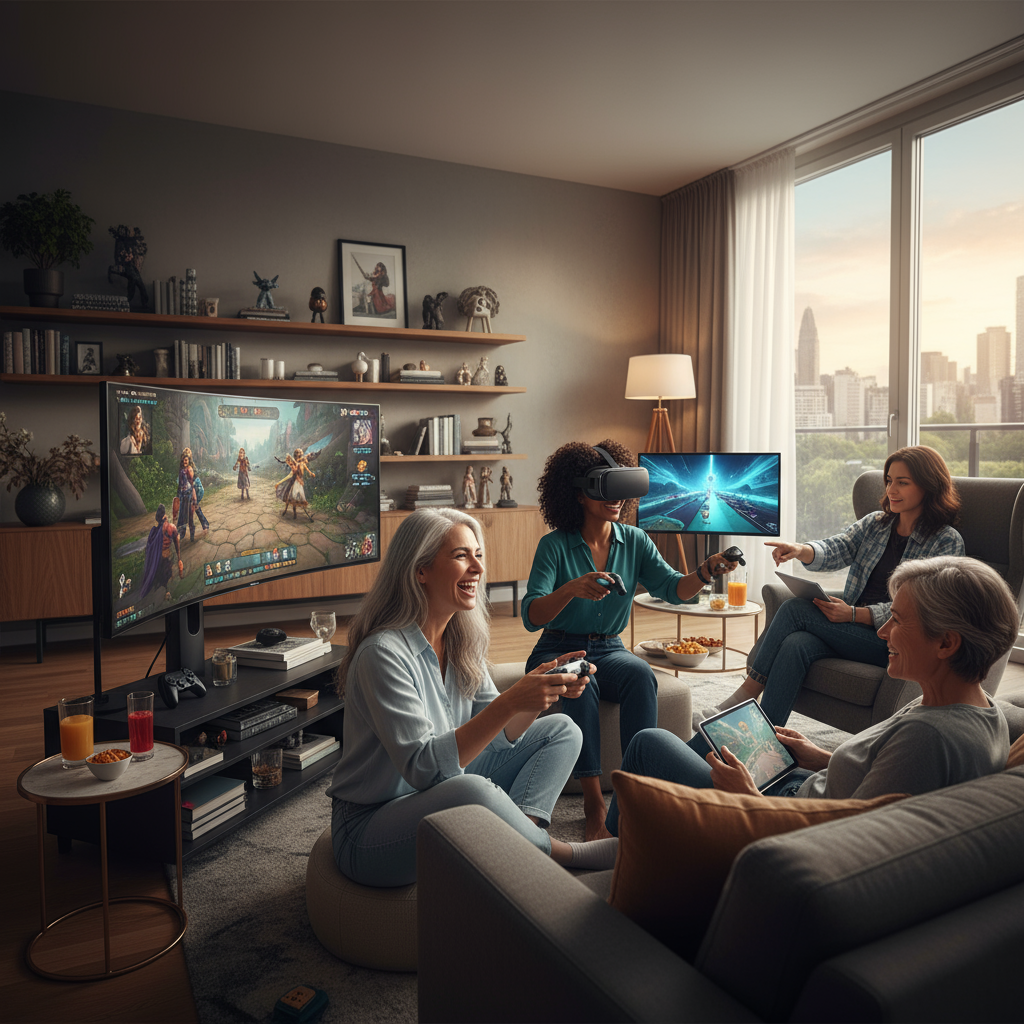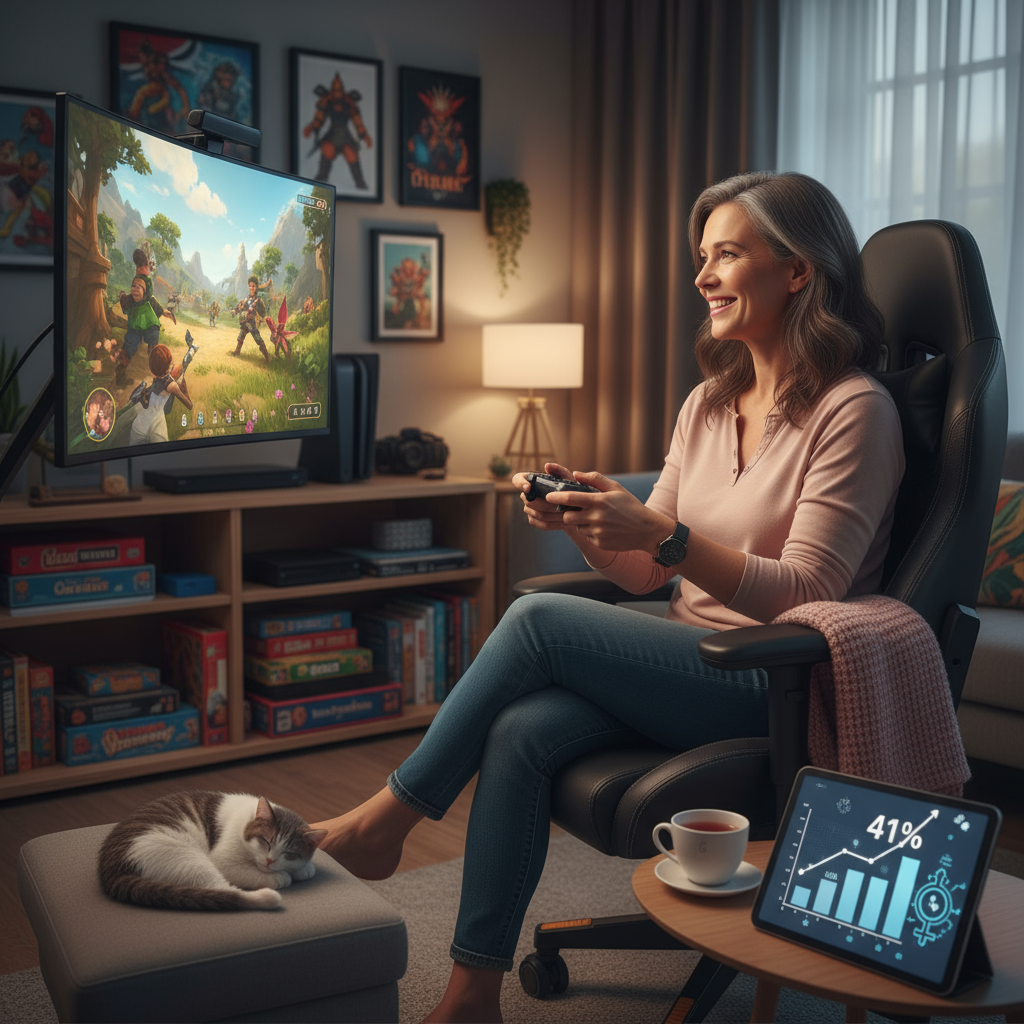Gaming’s Evolution: Beyond the Stereotype and Into the Mainstream

For decades, a persistent stereotype has clung to the image of “the gamer”: a young, often male, recluse hunched over a console in a dimly lit room. While this image might have held a kernel of truth in gaming’s nascent years, a recent report from the Entertainment Software Association (ESA) has completely shattered this outdated notion. The surprising revelation? The average gamer is now 41 years old, and almost half of all gamers are women. This isn’t just a shift; it’s a seismic transformation, proving beyond a shadow of a doubt that gaming has come an incredibly long way.
This data isn’t just a fascinating statistic; it’s a testament to the incredible evolution of the gaming industry itself. It highlights a broadening appeal, an ever-diversifying player base, and a future that looks far more inclusive than many might have predicted. Let’s delve into what these numbers truly signify and explore the exciting landscape of modern gaming.
The Maturing Gamer: Age is Just a Number

The notion of a 41-year-old “average gamer” might initially conjure images of parents playing alongside their children, or perhaps indulging in a nostalgic trip with classic titles. While both are certainly true, the reality is far more nuanced. Many individuals who grew up with the dawn of console gaming in the 80s and 90s simply never stopped playing. They’ve matured alongside the industry, transitioning from Atari and Nintendo to PlayStation, Xbox, and PC gaming, embracing new technologies and genres as they emerged.
This older demographic isn’t solely confined to traditional console or PC gaming either. The rise of casual mobile gaming, with its accessible interfaces and bite-sized play sessions, has undeniably contributed to this demographic shift. Games like *Candy Crush Saga*, *Wordle*, and *Angry Birds* have captivated millions, many of whom might not identify as “gamers” in a traditional sense but are actively engaged in interactive entertainment. These titles offer a convenient escape, a mental challenge, or a way to connect with friends and family, seamlessly integrating into busy adult lives.
Furthermore, the increased accessibility of gaming through various platforms, from dedicated handhelds to smart TVs, has lowered the barrier to entry significantly. Gone are the days when a gaming setup required specialized knowledge and hefty investment. Now, anyone with a smartphone likely has a gaming device in their pocket, making it easier than ever for a wider age range to participate.
The Rise of the Woman Gamer: Shattering Gender Stereotypes
Perhaps even more striking than the average age is the fact that nearly half of all gamers are women. This dispels yet another deeply entrenched stereotype: that gaming is a predominantly male hobby. While discussions around female representation and inclusivity in gaming have been ongoing for years, these figures from the ESA report provide irrefutable evidence of a massive and thriving female player base.
This demographic shift can be attributed to several factors. Firstly, as with older gamers, the accessibility of mobile gaming has played a significant role. Many women who might not have considered themselves “gamers” are actively engaging with mobile titles, enjoying the social aspects and the mental stimulation they provide. Secondly, the diversification of game genres has been crucial. While competitive shooters and sports simulations might still appeal to a certain demographic, the explosion of narrative-driven adventures, puzzle games, simulation titles like *The Sims* or *Animal Crossing*, and creative sandbox games has greatly broadened gaming’s appeal.
Moreover, the increased visibility of women in competitive gaming, streaming, and content creation has inspired more women to participate. Seeing female role models excel in e-sports or build thriving communities online helps to normalize and encourage female engagement in gaming. This positive feedback loop contributes to a more welcoming and inclusive environment for everyone.
Gaming: A Mainstream Cultural Force
These statistics paint a clear picture: gaming is no longer a niche pastime. It has cemented its place as a mainstream cultural force, enjoyed by a diverse demographic that transcends age, gender, and traditional cultural boundaries. This pervasive influence extends beyond merely playing games; it impacts technology, art, storytelling, and even social interaction.
The cultural impact of gaming is evident in numerous ways. Video game soundtracks are topping charts, game characters are becoming iconic pop culture figures, and game-inspired movies and TV shows are experiencing unprecedented success. Furthermore, gaming has become a significant form of social connection, with millions gathering online in virtual worlds and communities to play, chat, and form lasting friendships. It’s a space for creativity, competition, and camaraderie, fostering communities that stretch across the globe.
The gaming industry itself has evolved to meet the demands of this diverse audience. Developers are increasingly focused on creating inclusive narratives, offering customizable characters, and addressing issues of accessibility. This commitment to diversity and inclusion will only continue to grow as the industry recognizes the immense value of its expanded player base.
A Bright and Inclusive Future
The ESA report serves as a powerful affirmation of an ongoing revolution. The average gamer is no longer a stereotype; they are a vibrant, diverse, and engaged individual who comes from all walks of life. The fact that nearly half of all gamers are women, and the average age is now 41, speaks volumes about the incredible journey gaming has undertaken.
As technology continues to advance and the boundaries of interactive entertainment are pushed further, we can only expect gaming to become even more integrated into our lives. From virtual reality experiences that transport us to new worlds to augmented reality games that blend digital content with our physical surroundings, the future of gaming is undoubtedly bright, inclusive, and endlessly exciting. So, whoever you are, however old you are, and whatever your background, there’s a game out there for you. Welcome to the new era of gaming.

